Share This Article
Learn more
Lenovo Legion Go vs Asus ROG Ally: OVERVIEW
Last update on 2025-05-16 / Affiliate links / Images from Amazon.
Lenovo Legion Go
This gaming handheld offers an amazing gaming experience because to its strong processor, huge display, and numerous storage options. Although it is somewhat pricey at first, it also has a strong processor and useful controls, such as a trackpad and mouse wheel, to make gaming easier. Although it’s not as long as we’d like, the battery life is still better than the Ally’s. Super Rapid Charge is supported on this handheld device to swiftly recharge the battery. It does not offer VRR, in contrast to the Ally.
For
Against
Asus ROG Ally
Comfortable handheld, the Ally’s button arrangement and grips are reminiscent of an Xbox controller. Gamers may quickly adjust parameters from within the Armoury Crate program that comes with the game, including resolution, frame rate, RGB lighting, and more. Its potent processor, support for virtual reality, and stunning 7-inch display provide for seamless gaming experiences. Nevertheless, the ROG Ally’s battery life is limited, and microSD cards may malfunction due to a serious overheating problem. Nevertheless, upgrading storage with a bigger SSD is also quite simple.
For
Against
Both the ASUS ROG Ally and the Lenovo Legion Go are handheld PC gaming devices powered by Windows 11 and the AMD Ryzen Z1 Extreme processor. In addition, both templates are very dissimilar, with one offering advantages and features that the other lacks. While both are high-end gaming devices, there are general differences between the two.
Before deciding which gadget is best overall, we’ll be examining their differences across this page and evaluating which one is superior in a number of categories.
Both the Legion Go and the ROG Ally run Windows 11 and have extremely comparable specifications and costs. Although the Legion Go is one of the most potent portable gaming PCs available right now, it still needs more performance optimization before it’s worth your money.
- AMD Ryzen Z1 Extreme Octa-Core Processor
- 1920 x 1080 FHD 120Hz Display
- 16 GB LPDDR5 RAM
Last update on 2025-05-16 / Affiliate links / Images from Amazon.
Legion Go VS ROG Ally: SPECS
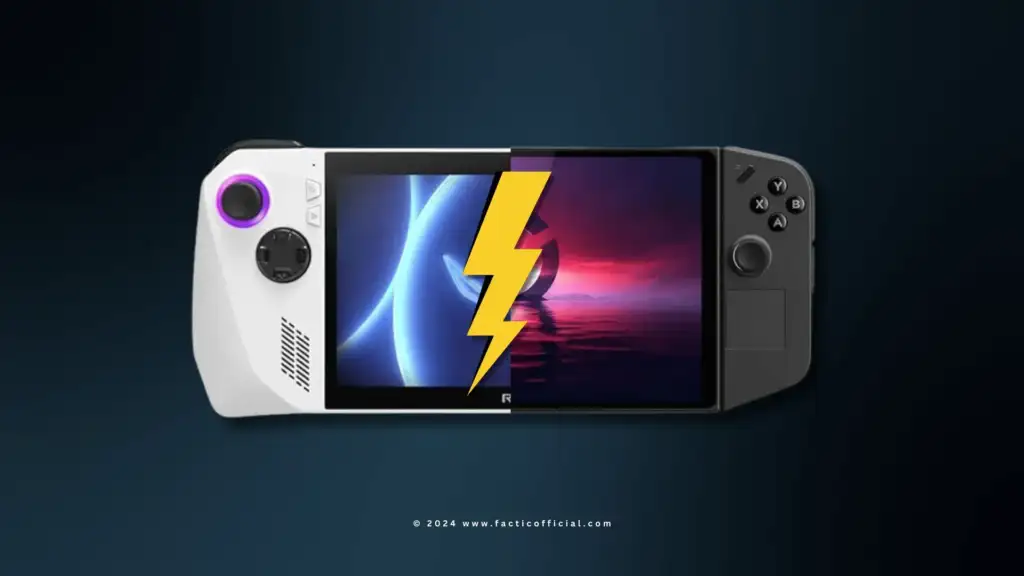
Legion Go Key Specs
ROG Ally Key Specs
Let’s read on in the following parts to get a better understanding of how the Lenovo Legion Go vs Asus ROG Ally compare, and maybe you’ll have enough arguments to determine which one is best for you.
Legion Go VS ROG Ally: PRICE

PRICE WINNER: The ROG Ally’s AMD Ryzen Z1 variant costs $100 less than the Legion Go’s base model. However, you need take other factors into account in addition to pricing when choosing a handheld. Since the more expensive ROG Ally can run games more smoothly, it is preferable to purchase it.
The ROG Ally is the clear winner if your choice is primarily based on which gaming portable is less highly-priced, the Legion Go or the ROG Ally. This is due to the reality that there are variations available: the AMD Ryzen Z1 Extreme Ally (eight.6 TFlops) for $559 or the AMD Ryzen Z1 Ally (up to two.8 TFlops) for $399. However, because the more high priced version may additionally run video games greater easily, I might in my view endorse going with it.
There are two versions of the Legion Go available, but the more pricey one isn’t always as correct as what ASUS affords. While the 1TB (1000GB) model sells a ways greater than every other, the 512GB model is slightly extra high-priced than Ally. You can buy the Legion Go and the ROG Ally from their respective company websites as well as Amazon.com.
Legion Go VS ROG Ally: PERFORMANCE AND STORAGE

PERFORMANCE WINNER: ROG Ally generally outperformed the other players and offered a more seamless gameplay experience during benchmark testing. Since both devices have the same chipset, they are fairly similar; however, it is important to be aware of the ROG Ally’s microSD card malfunction difficulties. The Legion Go is a better option if you want more storage, but ROG Ally generally plays more smoothly.
Editor’s Choice
It’s evident from comparing the chipsets inside the Legion Go and the ROG Ally that their overall performance is relatively comparable. This is because of the fact that each the Legion Go and the extra high priced Ally version employ an AMD Ryzen Z1 Extreme chip, which has shown to be a potent transportable processor which can effortlessly keep up with gaming needs.
However, a gaming handheld’s capability is decided with the aid of extra than really its CPU or GPU. The most essential aspect is how well every element features in concert with the others to hold system performance, which brings us to the subjects of memory, storage, and fan cooling.
It is quite likely that a user’s microSD card may overheat and malfunction because the ROG Ally’s microSD card slot is located close to the charging port and fan vents.
In my personal benchmark assessments, I in comparison the ROG Ally and Legion Go aspect by means of facet to see how they finished, and commonly, the ROG Ally executed better. In my assessment of the ROG Ally, I determined that it turned into enormously effective and supplied some of command center options to enhance the overall performance of games. On the alternative hand, overheating is a trouble for the device. A person’s microSD card might also overheat and malfunction on the ROG Ally because the microSD card slot is placed near the charging port and fan vents. Players may lose hours of gameplay statistics as a result, which can be fairly traumatic and negatively effect ROG Ally’s user revel in score. Fortunately, in case you need more storage, upgrading the SSD is quite simple. For more info, you can check out my guide on how to install the WD_BLACK SSD into ROG Ally.
Using a thermal camera, I tested the heat of a charging ROG Ally while playing Baldur’s Gate 3 in 30W TDP Turbo mode for my Unitek Cooling Dock review. It is noteworthy that an Ally’s system is likely to reach its maximum heating output while it is charging and in Turbo mode while playing a game. Through testing, I was able to verify that the microSD card slot on the ROG Ally can reach temperatures of up to 114 to 117 degrees Fahrenheit. Given this, it makes sense to replace the ROG Ally’s SSD with a bigger one. Installing the WD_BLACK SN770M 2TB SSD is not too difficult, making it an excellent choice.
- Introducing the WD_BLACK SN770M SSD, the first M.2 2230 NVMe SSD built from a brand gamers...
- Supercharge compatible handheld devices such as the ASUS ROG Ally and Valve Steam Deck with...
- Play more games, larger games wherever you are with up to 2TB of trusted Western Digital TLC 3D...
Last update on 2025-05-16 / Affiliate links / Images from Amazon.

My evaluation of the Lenovo Legion Go handheld shows that, thanks to its AMD Ryzen Z1 Extreme processor, it is also a potent gaming device. Despite this, games on this device were generally far better than those on ROG Ally, if a touch more jerky. Furthermore, it’s vital to remember that the Legion Go probably doesn’t experience the same microSD card overheating problem as the ROG Ally. Not to add, compared to Ally’s single 512GB storage option, it comes with far more capacity 512GB or 1TB. Having more capacity could alleviate some of the anxiety associated with archiving, removing, or uninstalling game data as much.
Legion Go VS ROG Ally: DISPLAY

DISPLAY WINNER: The Legion Go has the superior screen out of the two handheld gaming devices. It is larger (8.8 inches), has a refresh rate of 144 Hz, provides a far better color range, and delivers much greater resolution. Nevertheless, the ROG Ally’s screen is excellent much better than Steam Deck’s and will benefit users greatly because to its quick refresh rate option, compatibility for virtual reality, decent resolution, and passable picture quality. Having said that, you might enjoy using the ROG Ally more if VRR is a top priority for you when playing games.
Given that the Legion Go’s enormous display outperforms any other portable gaming screen on the market, it’s difficult not to be astounded by it. To the extent that some could argue the display is a little excessive for a portable gaming device.
At 8.8 inches, it’s incredibly big and may be the biggest portable gaming display available. The 7-inch ROG Ally display is undoubtedly inferior than it. The 1920 × 1080 resolution of ROG Ally is considerably superior to the 1280 x 800 resolution of the Steam Deck. But with its even greater resolution of 2560 x 1600 uncommon for a handheld—the Legion Go lets us view our games in even sharper detail.
The displays of the Legion Go and ROG Ally are each IPS touchscreens. But Lenovo’s has a much wider coloration gamut and advanced assessment. Legion Go generated 100% sRGB in my trying out, at the same time as ROG Ally could only manipulate to get seventy three% of sRGB. Having stated that, I have played games on the ROG Ally for countless hours, so I can attest to how properly colorings and information are rendered. Therefore, the gaming experience on both show isn’t too lousy.
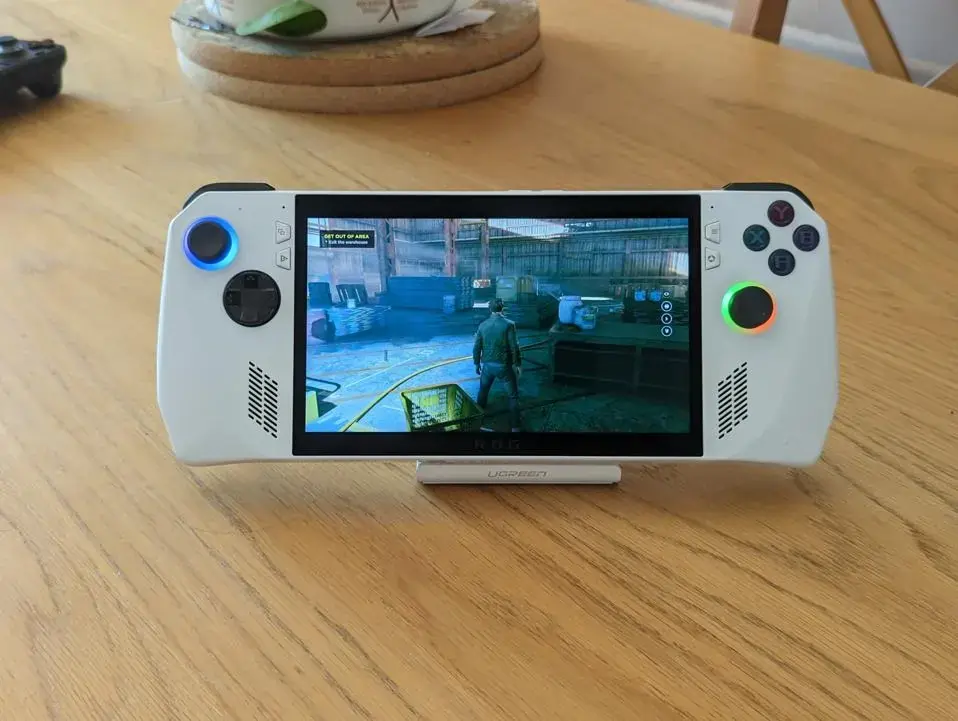
The refresh rates and VRR talents of the Legion Go and ROG Ally shows are the 2 essential regions of difference. The wide variety of instances a display indicates a sparkling photograph, this is transmitted to it from the system each 2nd is called its refresh fee. In order for players to react to adjustments of their surroundings, the greater frequently the refresh price is ready, the quicker the most latest photo is displayed. It’s essential for games that want brief reactions or for aggressive players who compete on-line against different players.
Most gamers should find the ROG Ally’s option to select between a 60Hz and 120Hz refresh rate to be rather helpful. But because of the Legion Go’s incredible 60Hz or 144Hz refresh rate which is quite good for a handheld it eclipses the Ally.
But Legion Go doesn’t support VRR, although ROG Ally does. A feature called variable refresh rate, or VRR, makes sure your gaming system and display image refreshes at the same time. In order to give players of some games that drop frames a more regular frame rate, this virtually eliminates screen tearing. It’s strange that VRR isn’t one of the Legion Go display’s characteristics given all of its other advantages.
Legion Go VS ROG Ally: BUTTONS, JOYSTICKS, AND GRIP
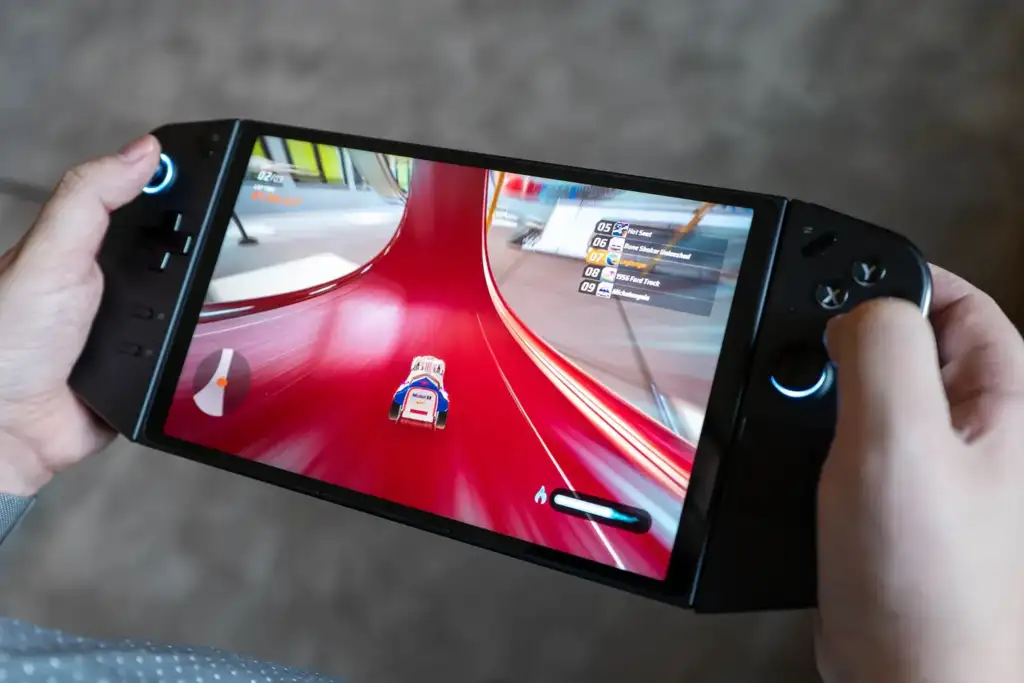
WINNER FOR CONTROLS AND GRIPS: ROG Ally wins in terms of familiarity because of its simpler design, which resembles an Xbox controller. In contrast, the Legion Go feels heavy and hefty. If users would want to take a break from their wrists, they may place the Legion Go in tabletop mode by taking off the kickstand and the controllers. In addition, playing some PC games or browsing the web is made much simpler with the Legion Go’s trackpad, FPS Mode, mouse wheel, and right and left click keys.
Since the ROG Ally and Legion Go have rather numerous designs, deciding on a controller and grip winner between them is greater often than not a query of choice.
The affiliation of the joysticks and buttons at the ROG Ally is extremely reminiscent of the Xbox controller, that’s seemed by means of the usage of many because the terrific console controller available. The bumpers and triggers sense amazing and are located flawlessly, at the equal time as the A, B, X, and Y buttons are big and clean to push. To exchange settings or customize the RGB lighting of the controllers mid-game, actually press one of the additional buttons (positioned on both thing of the display) to get entry to Ally’s Armoury Crate software.
At first appearance, the grips on the Ally don’t appear to be very sturdy. Nevertheless, I’ve never had cramps when gripping this system—a problem I nearly always have with my Nintendo Switch. The ROG Ally feels light and balanced, which also helps to lessen hand strain compared to other devices.
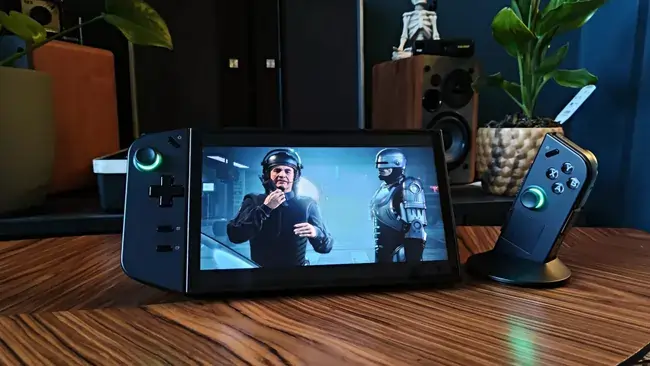
In the in the meantime, the removable TrueStrike controllers for the Legion Go are strong and noiseless, however tiny arms can also locate them tough to grip due to their thickness. The good thing approximately Legion Go, although, is that you could play your video games in tabletop mode, take out the sturdy kickstand, and give your wrists a relaxation. Some customers may additionally locate it much less comfortable to use the controllers’ front configuration, that is extra analogous to a Switch with smaller joysticks and buttons. Buttons and triggers, on the other hand, snap into vicinity and reply quick. Furthermore, the proper controller has a trackpad that resembles the Steam Deck, allowing improved cursor manage and particular responsiveness.
Furthermore, the right controller of the Legion Go features an extremely special feature that we have never seen before. It can be taken out of the main system, switched to First Person Shooter mode, and then magnetized into the controller base that comes with it. In this mode, you may browse the internet and navigate gaming menus more easily than with the Ally thanks to the mouse wheel and left and right click buttons that are active.
In addition, Lenovo states that the optical eye on the bottom of the Legion Go controller, when in FPS mode, “allows for more precise aiming and control necessary during competitive FPS games, akin to using a mouse.” This feature makes the Legion Go controller work more like a mouse. Although it takes some getting used to, the controller’s unusual form makes it responsive when dragged around.
Legion Go VS ROG Ally: COMPATIBLE GAMES & OS

SOFTWARE WINNER: You can be positive that you will be capable of run a large range of programs or get admission to an entire lot of offerings on each devices due to the fact they each run Windows 11. But, ROG Ally’s Armoury Crate software program software is advanced as it gives hundreds greater configuration choices and a real activity launcher.
Because Windows 11 Home is the operating system on both the ROG Ally and Legion Go, they may be used for online browsing, running different applications, and playing games from digital distribution stores or cloud services (Steam, Epic Games, Xbox Game Pass, etc.). In essence, the Legion Go or ROG Ally can perform every task that a basic gaming laptop can.
Both gaming handhelds include proprietary software in addition to the OS that lets users change parameters like frame rate, resolution, RGB illumination, and more. The game launcher on Legion Go isn’t actually a game launcher; rather, it’s a means of accessing other game launchers, and the Legion Space software is far more constrained. In the meanwhile, based on my personal experience with the ROG Ally, I can state that while the Armoury Crate app isn’t flawless, it does provide useful more control over the system.
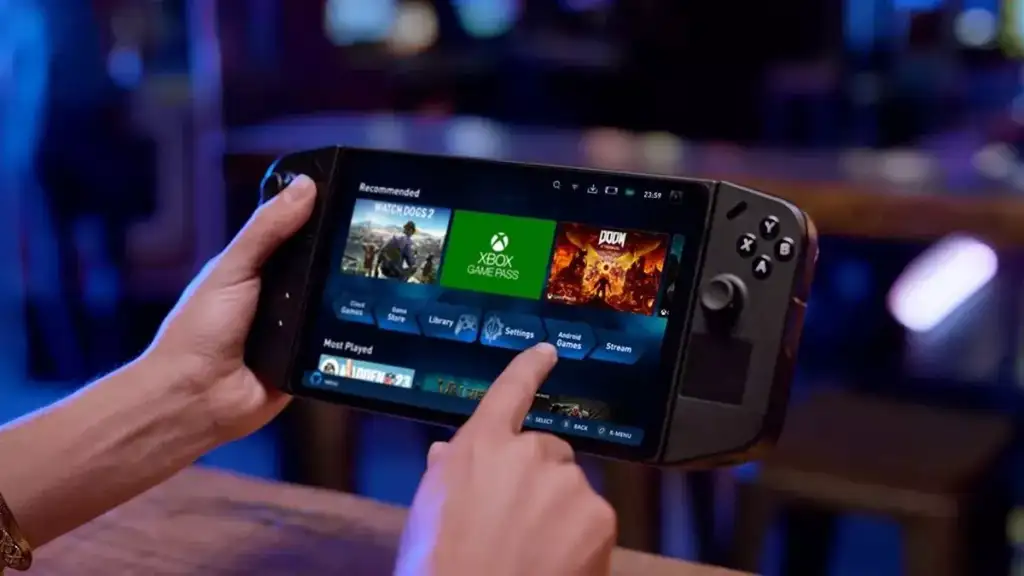
Launching my favorite, most-played games with this program within ROG Ally’s Armoury Crate facilitates starting a gaming session more quickly. Toggling off parameters such as FPS, resolution, Air Plane Mode, and more is done by pressing the button on the left side of the screen. The fact that I can only have so many configuration toggles in this side menu, though, annoys me.
Legion Go VS ROG Ally: BATTERY LIFE
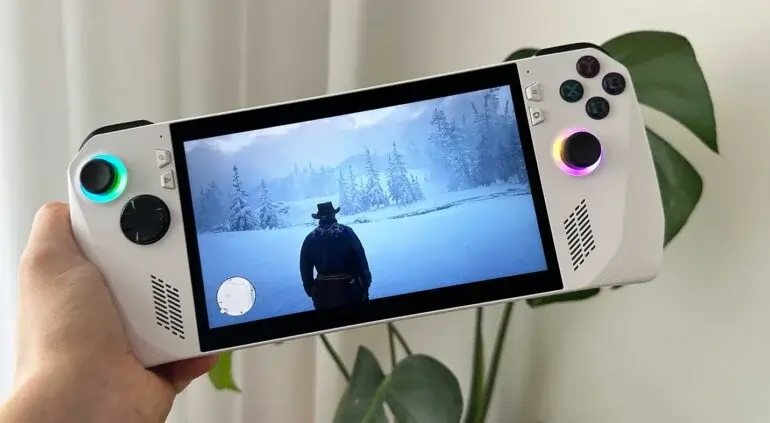
BATTERY WINNER: The Legion Go has a greater battery life than the other handheld, even though it has a much more spectacular screen, which I would have anticipated to draw more power. On average, the ROG Ally lasts for one hour and forty-nine minutes, but at its lowest settings, it can last up to three hours. On its lowest settings, I managed to get the Legion Go to run for about five hours, with an average of two hours. Nevertheless, the battery life of neither gadget is particularly good, so buying a power bank or battery pack for ROG Ally or Legion Go is a smart move.
I played games on the handheld and experimented with different modes and settings to test the ROG Ally’s battery life. With 50% display brightness and 15W Performance mode enabled, the system barely lasted an average of 1 hour and 38 minutes when playing Diablo 4. I was only able to get it to last for three hours and three minutes when I drastically reduced all the settings. It’s not very good.
Concurrently, trying out the Legion Go’s battery existence revealed that, although it is able to last up to 5 hours on the lowest settings, it has a relatively short battery lifestyles (approximately two hours on common), less than that of the Ally. You must lessen the decision, brightness, FPS, and overall performance settings to maximize the performance of each devices.
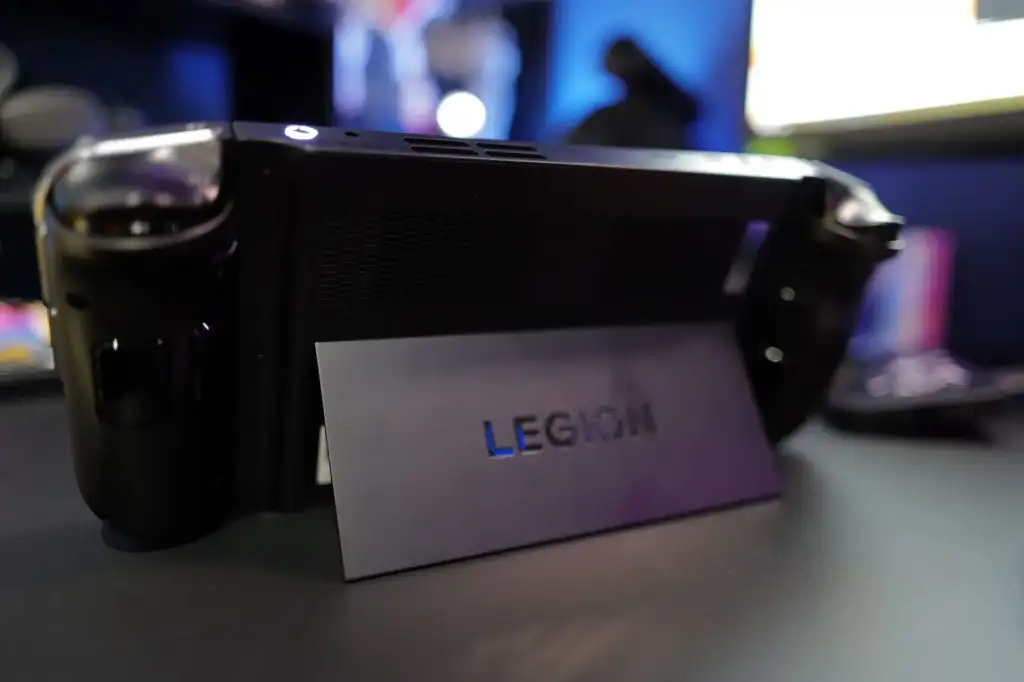
Additionally, Lenovo included Super Rapid Charge capability, which enables the system to reach a 70% battery after just 30 minutes of charging, as a way to somewhat offset the short battery life of the handheld. That is a quick recharging time for a portable device. Another convenient feature of the Legion Go is the ability to play on a tabletop mode while it charges by simply removing the kickstand.
Legion Go VS ROG Ally: ACCESSORIES
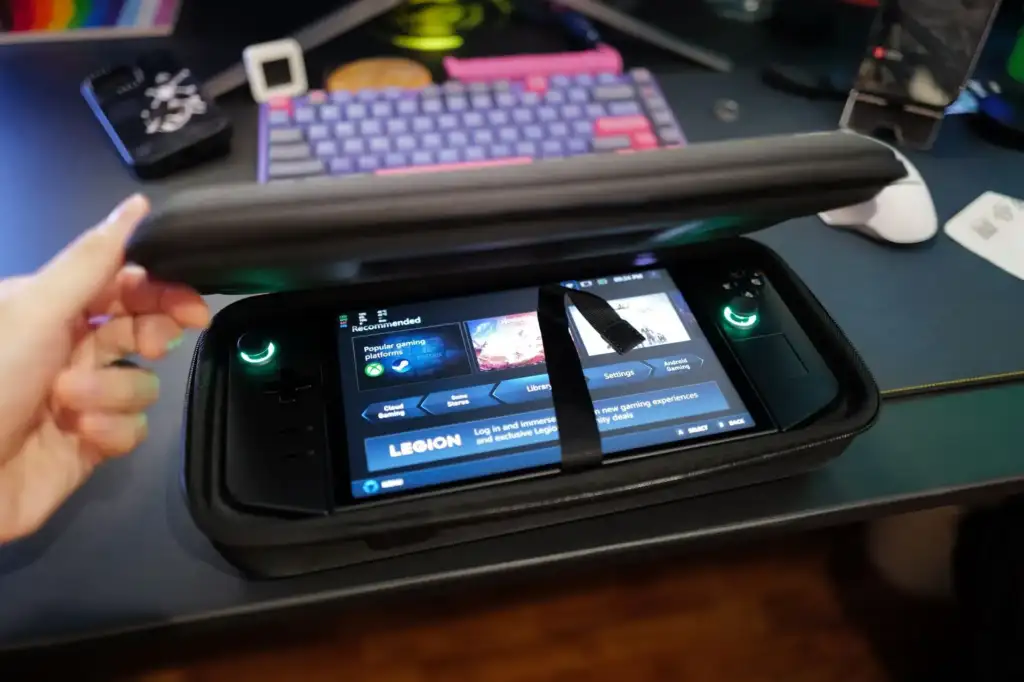
ACCESSORY WINNER: The ROG Ally’s official case needs to be purchased separately, whereas the Legion Go comes with a carrying case in the package. However, just by virtue of being available for a few months longer, the ROG Ally has more third-party peripherals available. However, if the Legion Go does well in the marketplace, third-party accessories designed specifically for it will probably be released as well.
Alongside the ROG Ally, Asus produced a carrying cover that is sold separately for safer transportation. They further stated that the gaming handheld could be used to dock the device to a TV or monitor and increase performance even more by using the incredibly costly ASUS XG Mobile eGPU. In the meanwhile, the Legion Go comes with a carrying case, saving you money on further purchases. It also includes a foundation for the FPS mode on the right controller. Though nothing official has been announced about a Legion Go dock thus far, this could change.
There have been no 0.33-party accessories available whilst the ROG Ally changed into first launched, however over time, net shops commenced to offer several. Given this, if the system does properly inside the market, it’s fantastically probably that we will see in addition Legion Go accessories launched. It’s additionally crucial to recall that Legion Go is compatible with ROG Ally, just as a number of peripherals designed in particular for Steam Deck are. For example, many docking stations and wearing cases are like minded with each handhelds so long as the wattage is sufficient. However, some USB-C cables on hand held docks might not reach the connector because the Legion Go is taller.
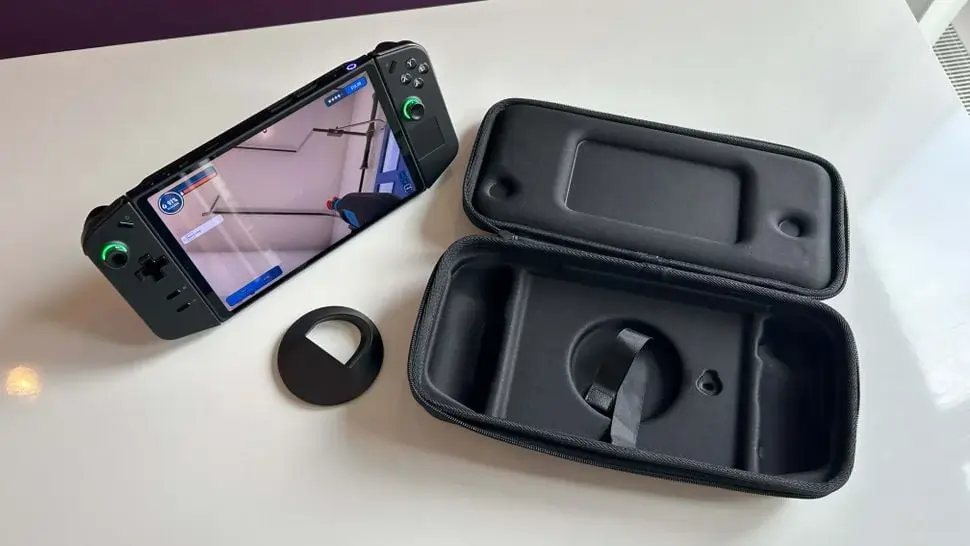
I’ve personally used a ROG Ally or Legion Go to compose documents, view YouTube/TikTok, and browse the web by connecting a keyboard and mouse to the device via an adapter or a compatible dock. If you own the appropriate peripherals, you can use either device much like a mini laptop.
Legion Go VS ROG Ally: WHICH SHOULD I BUY?
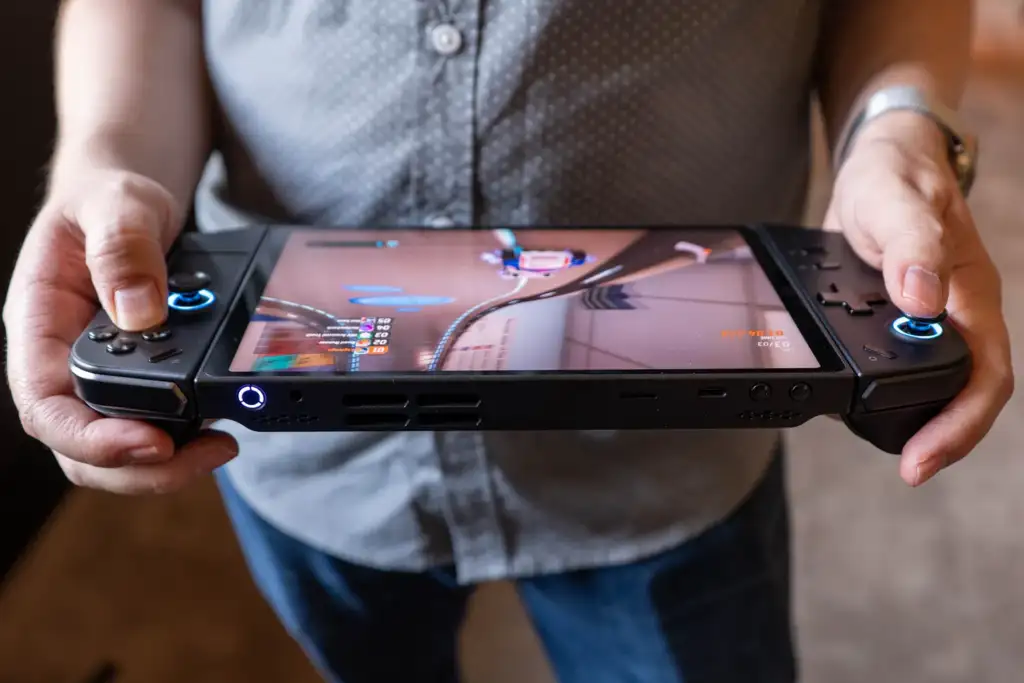
BEST OVERALL: Because of their AMD Ryzen Z1 Extreme processors and distinctive features, the Legion Go and the ROG Ally are both excellent gaming handhelds for PC or cloud games. They each succeed, though, in areas where the other does not. The ROG Ally is the best option if you want superior gaming performance on a tight budget. On the other hand, the Legion Go is a great option if your only concern is possessing a more functional gadget with an improved screen.
While the Legion Go boasts a better screen than the other, the ROG Ally offers a more enjoyable gaming experience altogether. This is because the VRR support makes games run a little bit more smoothly and the Ally’s Armoury Crate program has more configuration options. Furthermore, ROG Ally is more affordable than the Legion Go, which will ease your financial burden. The main issue with it is that it might lead to microSD card overheating and malfunctions; therefore, you may wish to replace the internal SSD with a bigger one (such as the WD_BLACK SN770M 2TB SSD).
Having all that, the Legion Go remains an excellent gadget. It has a larger 8.8-inch IPS touchscreen with a greater refresh rate and substantially higher quality. Furthermore, the device boasts cutting-edge capabilities that make playing some PC games much simpler, like a trackpad, right and left click keys, and an FPS mode. Furthermore, the battery has a slightly longer lifespan than ROG Ally’s. For me, it was also quite easy to be able to take the controls off of the Legion Go and play in tabletop mode. However, greater settings and VRR compatibility would improve the gaming experience on Lenovo’s handheld device. Thus, ROG Ally will satisfy your needs if performance is your main priority; nevertheless, if you’re interested in playing on a lovely.
- AMD Ryzen Z1 Extreme Octa-Core Processor
- 1920 x 1080 FHD 120Hz Display
- 16 GB LPDDR5 RAM
- ULTIMATE GAMING IMMERSION: Elevate your gaming experience with the Lenovo Legion Go and enjoy...
- UNLEASHED GAMING POWER: Harness the strength of the AMD Ryzen Z1 Extreme processor and enjoy...
- IMMERSIVE VISUAL EXPERIENCE: Dive into gaming like never before with the Legion Go's stunning...
Last update on 2025-05-16 / Affiliate links / Images from Amazon.
Why Trust Factic
Berry Alex has been evaluating, testing, and reviewing tech, Household and travel items for several decades. He compiled all of the testers’ input, conducted extra research to assess each phone mount’s essential features and overall functioning, and reviewed professional profiles and verified customer reviews for each product.



